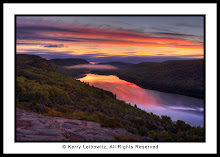I write on behalf of every animal you keep in a cage, a pool, or any sort of an enclosure. I write on behalf of the ones that have died, are still alive, and with a force thousands strong for those that have not yet been captured. This letter is for every soul of every animal that was extinguished, coated over, and destroyed by your theme parks. It is also for every animal currently walking or swimming in circles, wondering why they cannot hear or see their families anymore. This letter is for them, but it is from me.
Who am I to write such a letter and declaration to you? I am your ideal customer. I, like the trainer who died at your Orlando park on Wednesday, February 24, used to dream of being a whale trainer at one of your parks. My eyes lit up with wonder when I first saw a killer whale up close, and I wanted to know these creatures, love them, learn from them. For many years I planned to be a marine biologist, but with each of those passing years and studies I realized I could not with a good conscience be a whale trainer.
I learned, for instance, of the complicated family and migration rituals of the killer whale. I heard the songs of a family communicating. I watched documentary after documentary and read study after study about the beautiful black and white creatures. I saw them leap into the air with glee, play with each other, teach their young, love. I saw it all in these wild animals.
Then I returned to Sea World with my family. Instead of beauty surrounding the animals I saw there, I witnessed chains. No, not literal chains, but when you surround an animal with dry land that needs water to survive, you strap them into a small cell as a result. I looked into the eyes of one of your Orcas on your viewing deck, and I saw nothing there but pain, and loss. Could that same whale have been the one that killed the trainer at the same park? Possibly. Whether or not it was, however, is not what matters here. What matters here is the overwhelming sadness present in a place like Sea World.
The entire park is based upon the exploitation of wild animals for human amusement. The animals do not live long happy lives in captivity as is so cleverly marketed to the general public. They become lonely, and often die. They miss their families, their friends, and their homes. Even the children they give birth to in the pools and cages rarely survive.
Whales are amazing creatures. They have highly complicated family groups with communication and cooperation humans are just beginning to understand. When one whale (or dolphin) is removed from their family it is in essence kidnapping. Each whale and dolphin is an individual in their respective family, not just another random living creature. The whales and dolphins recognize each other and thus react differently depending which individual it is. This is not unlike humans. From this thriving community of cooperation and love whales and dolphins are ripped away and placed in small tanks (and any tank is small compared to the ocean) and made to perform for a live audience of humans.
Is it tragic that trainer Dawn Brancheau had to lose her life? Of course it is. It must be remembered, however, that the whales she so loved were trapped against their will and forced to perform for people they did not know. These whales (and dolphins) have many among them that probably still remember life in the wild, with no pavement pools or screaming humans. Many still remember the glimmer on the surface of the water at sunrise and sunset. Many still remember the feeling of freedom beneath their fins.
Sea World takes away the freedom of many of the most intelligent and majestic of all living creatures. Not only do they take away this freedom, but they do it to turn a profit. This is unacceptable, cruel, and wrong.
The public relations specialists for Sea World will probably start promoting all of the "good" the company has done and will do in the coming weeks. They will show the public pictures of their veterinarians going to help wild animals affected by pollution, illness, oil spills. Sea World will do all of this while openly ignoring the fact that they are enslaving animals with their very existence.
What do I propose Sea World should do? They should get their animals ready to live in the wild again. Teach them to fish for themselves, yet again. Do all that is possible to prepare them and then set them free. Will all of them survive? No. Will some? Most definitely. The fact that some will die is one that will happen if they are left in their pools that are chains as well. Sea World also needs to stop paying for animals captured from the wild. They need to halt all activities that hold animals against their will and exploit their natural abilities for profit. Sea World needs to close its gates for good or reinvent for itself an image not based on animal exploitation.
I hope that trainer Dawn Brancheau rests in peace and that the whale Tilikum along with all of the similarly enslaved animals at Sea World will one day see the sunrise and set on the ocean again. I demand that they be set loose to the wild to yet again choose their own fates, and never again perform for a screaming audience for nothing but profit.
UPDATE: I was contacted from James Brown from the BBC Radio show World Have Your Say. They are running a live show this afternoon at 12pm Central Daylight Time (1800gmt) and they might call me to discuss this issue. Please listen in! Here's the link: http://worldhaveyoursay.wordpress.com/2010/02/26/should-animals-be-kept-for-our-entertainment/























